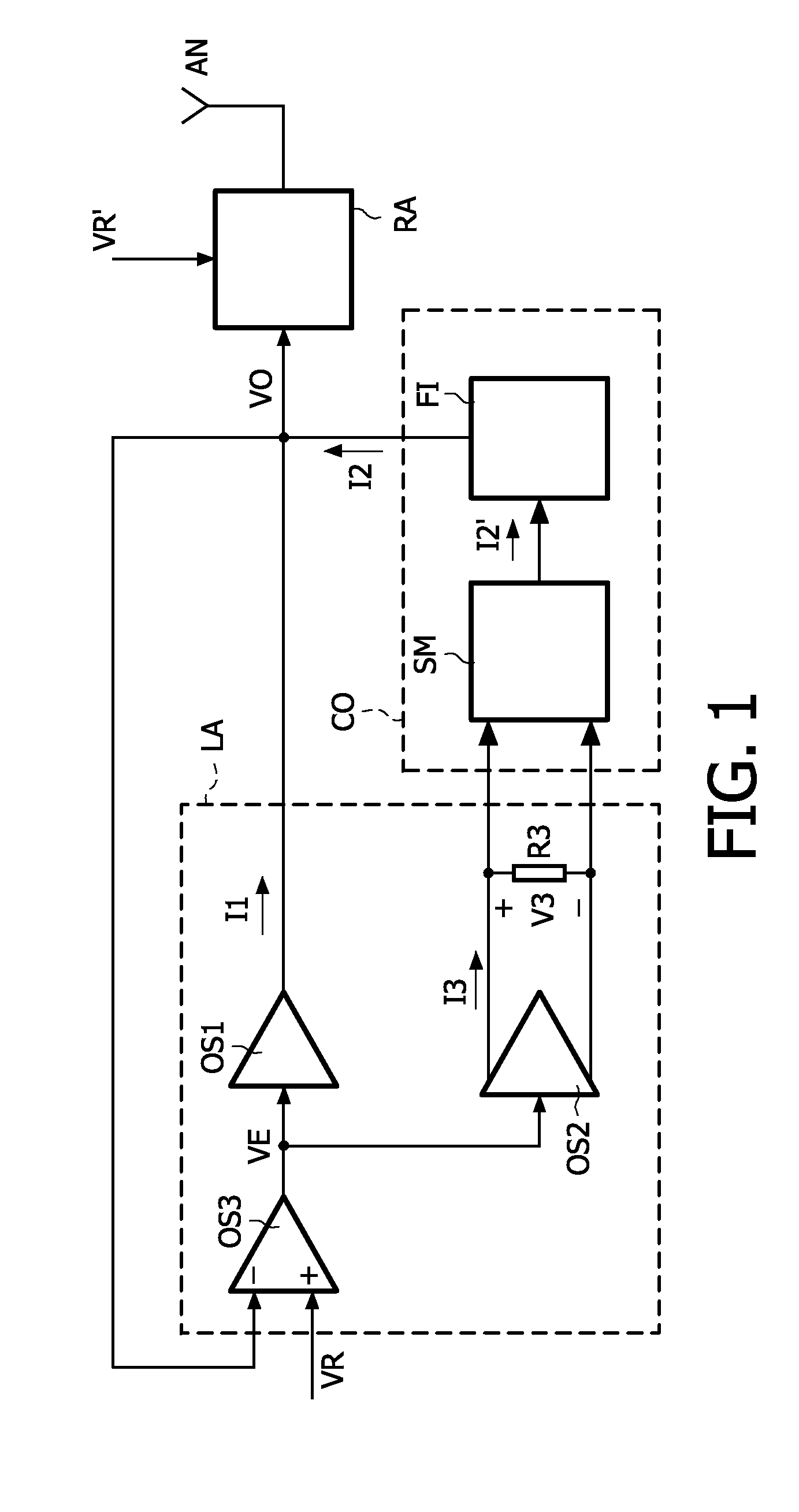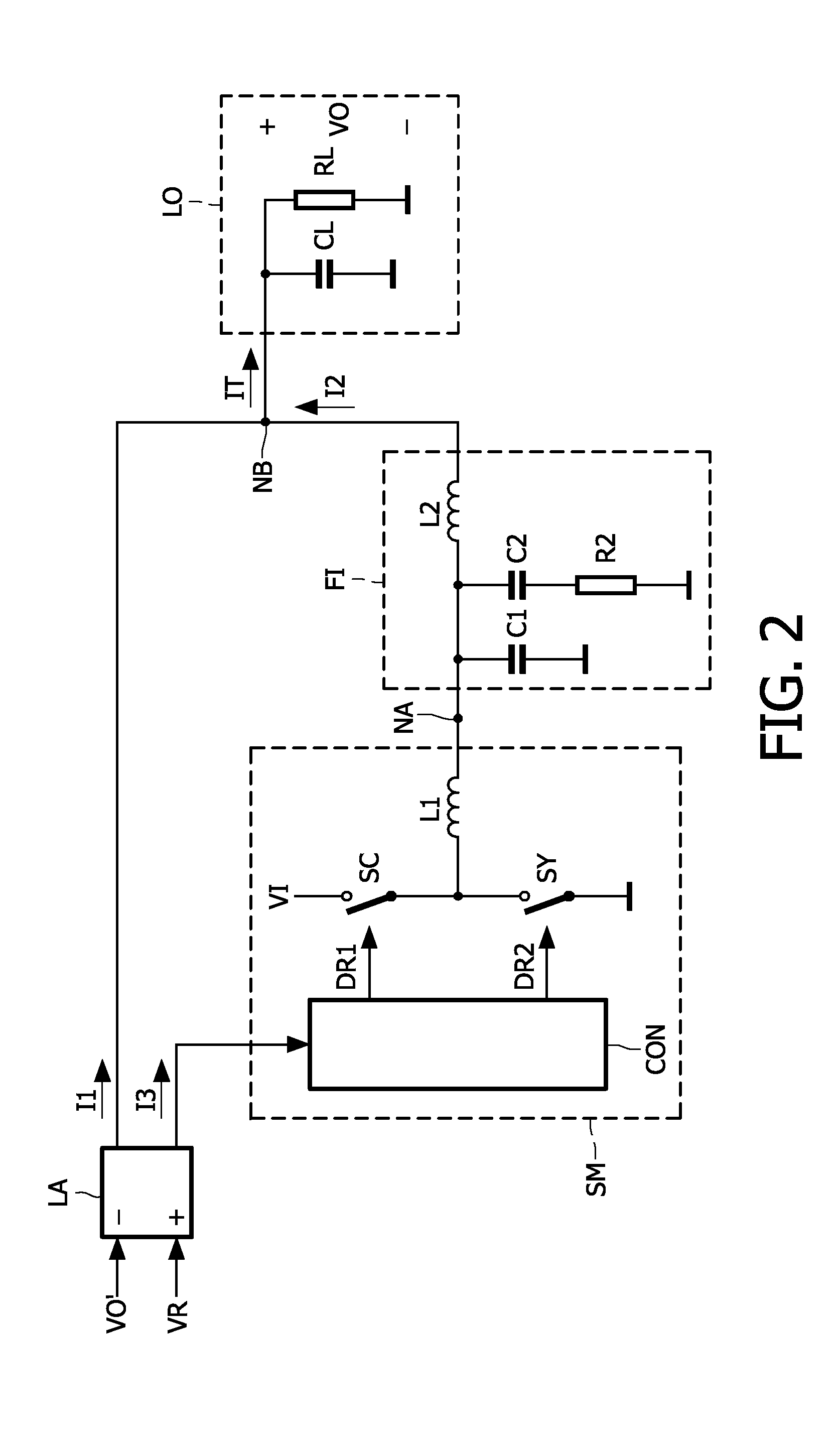Parallel arranged linear amplifier and dc-dc converter
a technology of linear amplifier and parallel arrangement, which is applied in the direction of amplifiers, amplifiers with semiconductor devices/discharge tubes, instruments, etc., can solve the problems of high frequency of dc-dc converter supplies, relative slow dc-dc converter supplies, etc., and achieve the effect of not jeopardizing the stability of the control loop
- Summary
- Abstract
- Description
- Claims
- Application Information
AI Technical Summary
Benefits of technology
Problems solved by technology
Method used
Image
Examples
Embodiment Construction
[0035]FIG. 1 shows a block diagram of an apparatus which comprises the power supply system in accordance with the invention. By way of example only, the apparatus shown is a telecom system. The power supply system is advantageous in any other apparatus which requires an efficient and fast power supply which is able to change the output voltage at a fast speed, or which is able to respond quickly to a change in the load of a circuit of the apparatus.
[0036]A power efficient RF (high frequency) power amplifier RA for use in, for example, 2.5G, 3G, or 4G telecom systems requires a fast and power efficient supply modulator. This supply modulator or power supply system supplies a rapidly varying supply voltage VO to the RF power amplifier RA. The supply voltage VO fits the output power to be supplied by the RF power amplifier RA. A fast and accurate control of the supply voltage VO, and thus of the current supplied by the power supply system, is especially important in handheld battery op...
PUM
 Login to View More
Login to View More Abstract
Description
Claims
Application Information
 Login to View More
Login to View More - R&D
- Intellectual Property
- Life Sciences
- Materials
- Tech Scout
- Unparalleled Data Quality
- Higher Quality Content
- 60% Fewer Hallucinations
Browse by: Latest US Patents, China's latest patents, Technical Efficacy Thesaurus, Application Domain, Technology Topic, Popular Technical Reports.
© 2025 PatSnap. All rights reserved.Legal|Privacy policy|Modern Slavery Act Transparency Statement|Sitemap|About US| Contact US: help@patsnap.com



